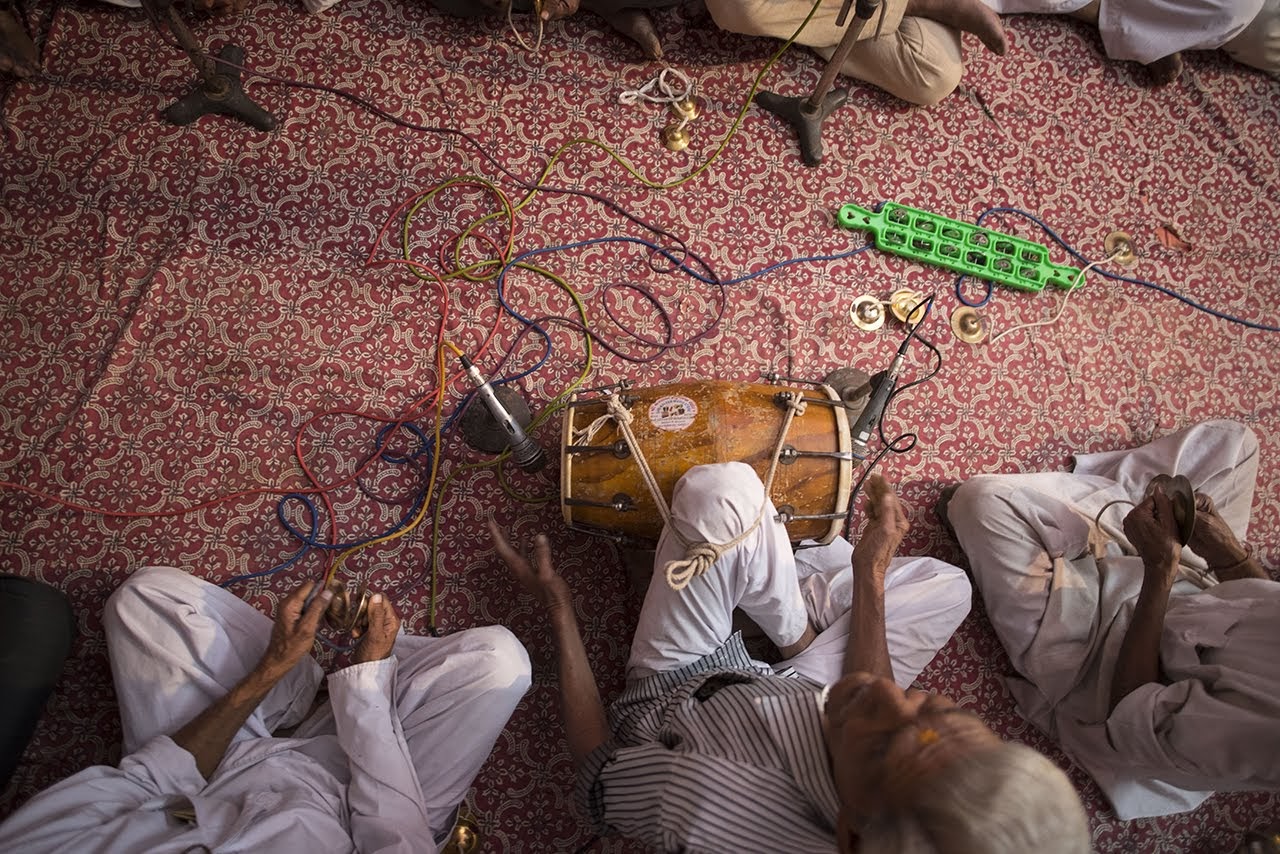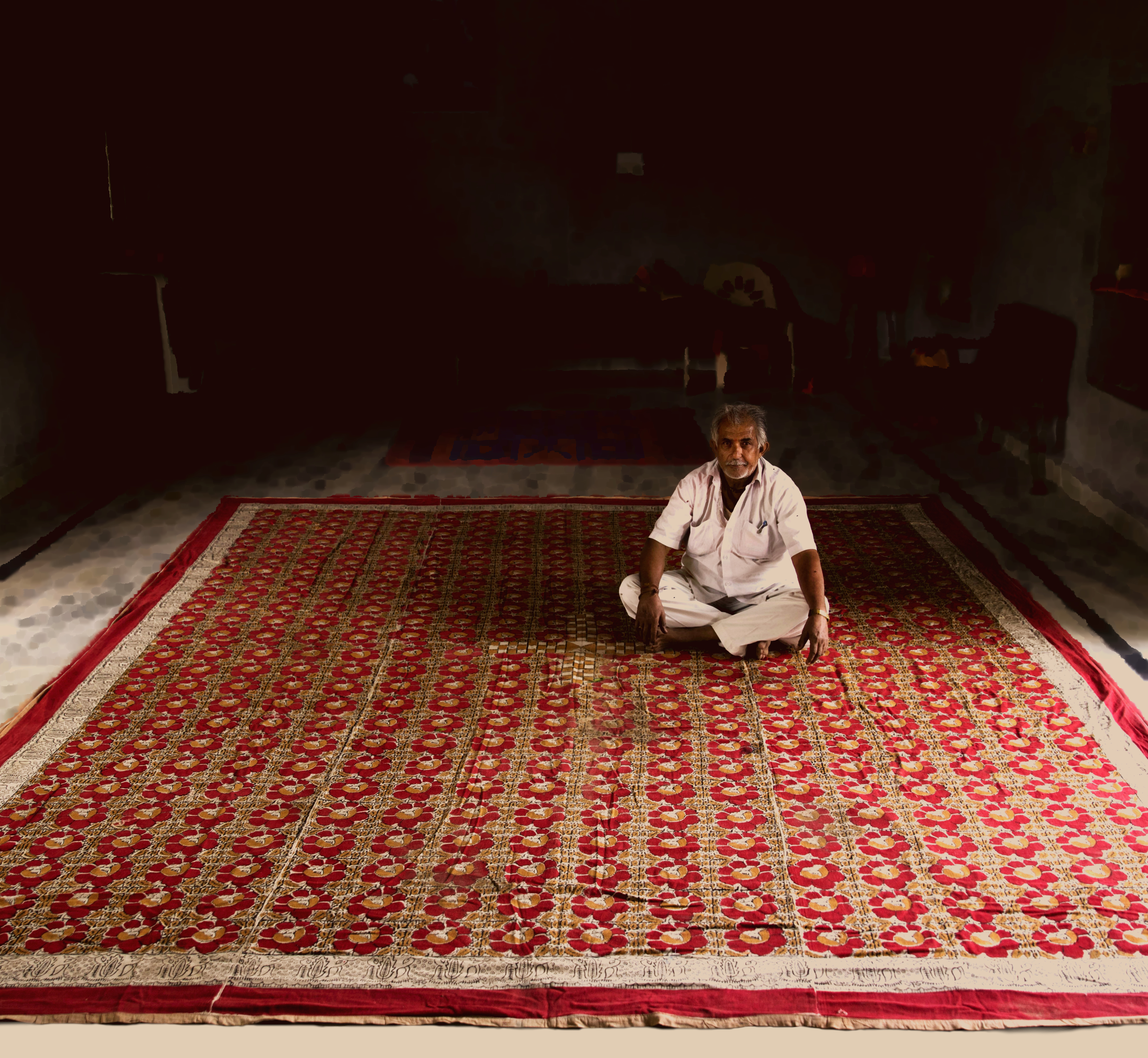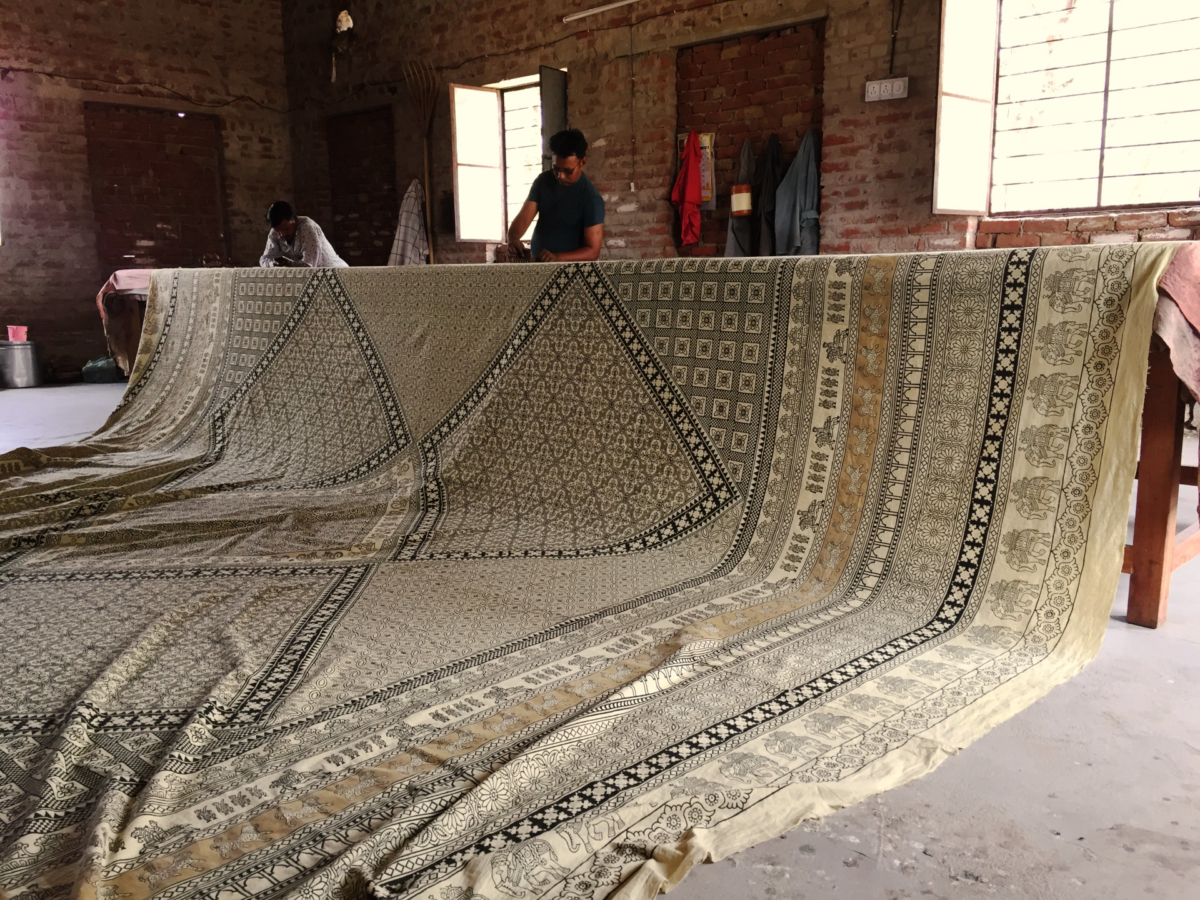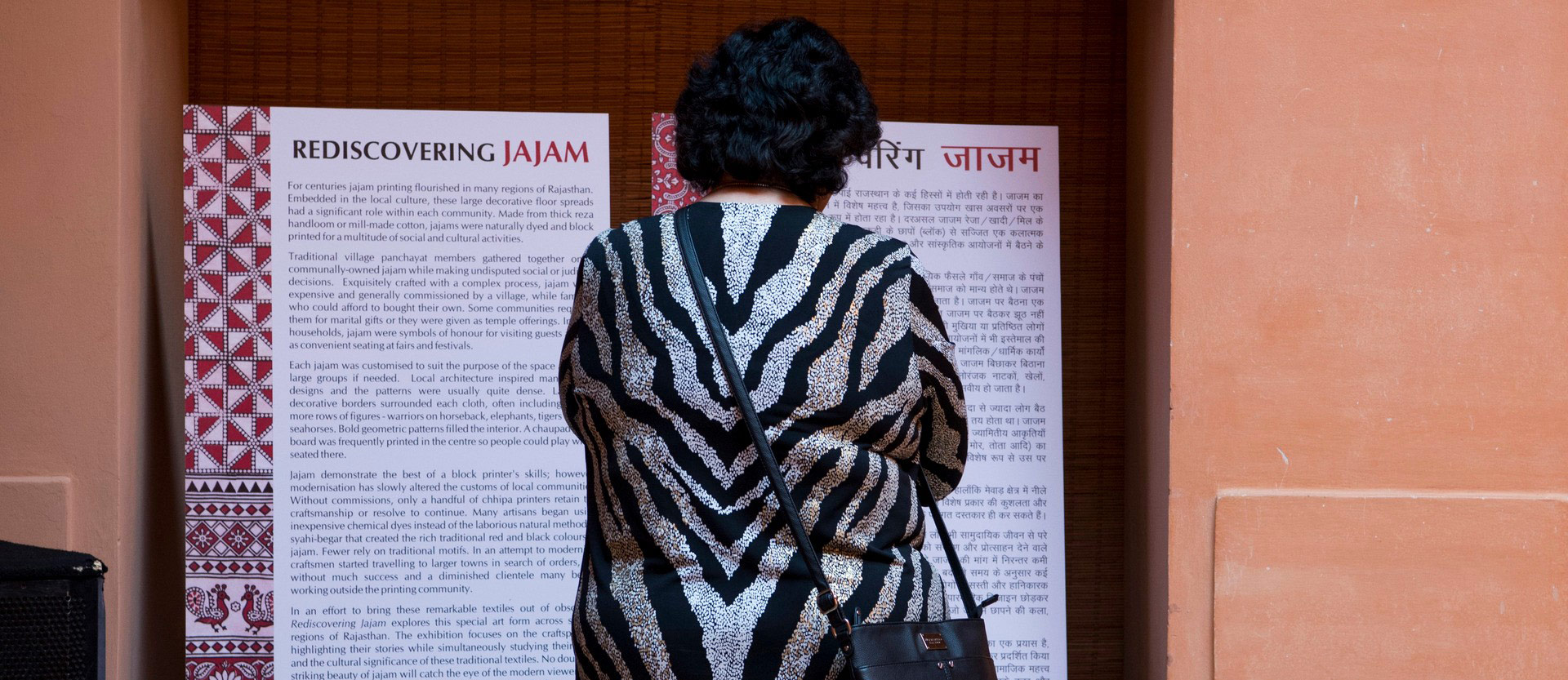Jajam
Rajasthani traditional fabrics, even from a distance, shine in their diversity and tales of their origin. Every beautiful weave carries within a history of a craft that has never remained isolated from the social life that surrounded it. Jajam textile, as expansive as our imagination, decorated the earth during marriages, social events and even important community gatherings like village Panchayats. As one gets closer to the threads of jajam, one can still feel the warmth and festivity of the traditions that inspired it.

The
People's Textile
Coming Together
Jajam has been called the people’s textiles as they were often communally owned and played a vital role in the social life of the village. These intricately crafted textiles were personalised for each community and were spread out when the communities got together for important events or festivals. Jajam textiles also have a history of being exchanged as marital gifts or temple offerings. In rural households, they were a symbol of honour for the visiting guests as well as convenient seating at fairs and festivals.
Since 2016
Rediscovering Jajam
In an effort to bring this remarkable textile out of obscurity, Wabisabi Project has initiated a project — Rediscovering Jajam with enthusiastic support from the Anokhi Museum of Hand Printing.
The project began with the objective of documenting the craft, stories, and culture around Jajam. In due course, the research blossomed into an exhibition that explores the significance of jajam through old textiles and new experiments by us, and a video documentary that captures various narratives of jajam textile and its ubiquity in everyday life.
Gradually, this project which began on a pilot basis in 2016 opened new avenues. With more people on board, the ship is steadily sailing en route on the course of rediscovering jajam.

Rediscovering
JAJAM
As public spaces go missing in our urban lifestyles, Indian craftsmen share their stories of Jajam, a large traditional textile that signified a space of gathering for people in villages. Embedded in the culture of Rajasthan, Jajam was called the ‘people’s textile’ as it was often communally-owned and played a vital role in the social fabric of local communities. “Rediscovering Jajam” is not only about how Jajam textiles have featured in changing contexts over the centuries, but also about the people, their experiences, beliefs and way of life.


The Wish to Make. One. Many
The threads of Jajam beautifully weave together wisdom gained across generations. It transcends the boundary of textile and emerges as a unifying agent in the celebration of togetherness. At our Bagru workshop, as young designers, we strive to adapt these vocabularies of Jajam motifs to recreate it in its traditional aesthetics and further make contemporary apparel and home furnishings. In our heart of hearts, we hope the concept of coming together is revisited in today’s digital age.

On-going Research
During our research, we could trace the roots of Jajam to various parts of Rajasthan. Striking cultural similarities led Jajam prints to surface in the Barmer region of Western Rajasthan. Further east, we reached the Bundi region, popular for resplendent Jajam with local floral and wildlife motifs. We also found printing hotspots in the Ajmer region of central Rajasthan. As the seat of Rajputs, Shekhawati emerged as a land of dedicated Jajam patrons.
Our immense faith in interacting with communities is leading us cheerfully to these regions. We believe in documenting these facts, stories, and memories and passing them on to other Jajam enthusiasts. This along with the exhibition of craftspeople's skills and their labor of love is the best way forward.

The Traveling Exhibition
Rediscovering Jajam
Tracing the aesthetic variations in Jajam textiles, the exhibition highlights a wide-ranging collection of new and old jajam across several regions of Rajasthan. This exhibition focuses on the craftspeople, highlighting their stories while simultaneously studying their work and the cultural significance of these traditional textiles. A contemporary collection by Wabisabi Project looks at ways to adapt these classic motifs and patterns.
Dec 2021 – Mar 2022
Kalm Village, Thailand wants to create a place that brings people together through the love of art, craft and culture. They believe in the ability of art, craft and culture to educate, engage, inspire and empower.
Much like Thailand, India’s art and crafts are embedded in every aspect of its identity. We hope exhibiting Jajam allowed visitors to explore many aspects in which art and crafts traditions remain an integral part of everyday life to this day. Read more↝
Jan 2018 – Apr 2019
Anokhi Museum of Hand Printing, Jaipur is dedicated to the craft of block printing. It encourages textile specialists, the general public and more importantly, the artisans themselves to visit and view their craft in a unique and inspirational way.
We are delighted to have willing support from Anokhi in documenting Jajam and exhibiting in the museum. Read more↝